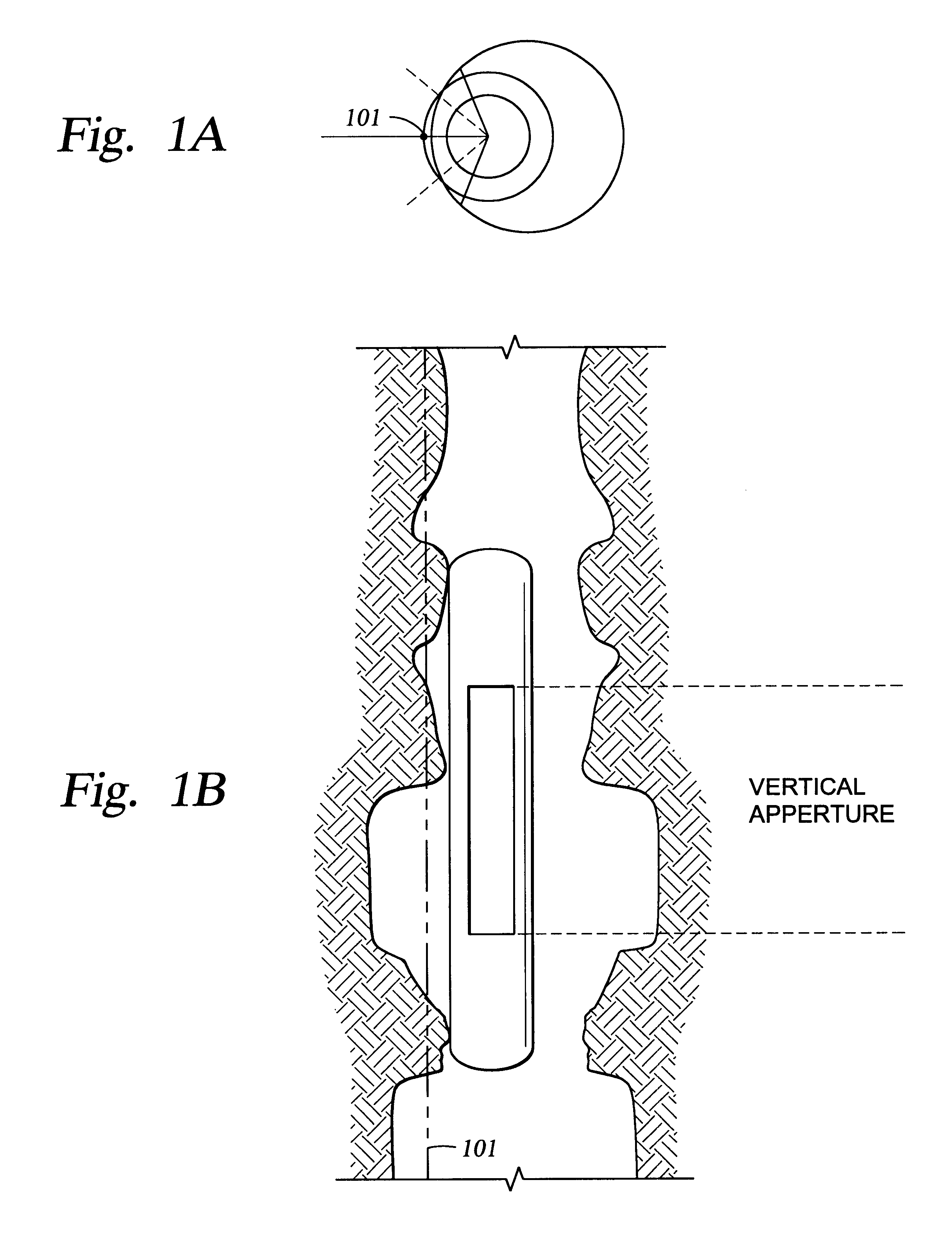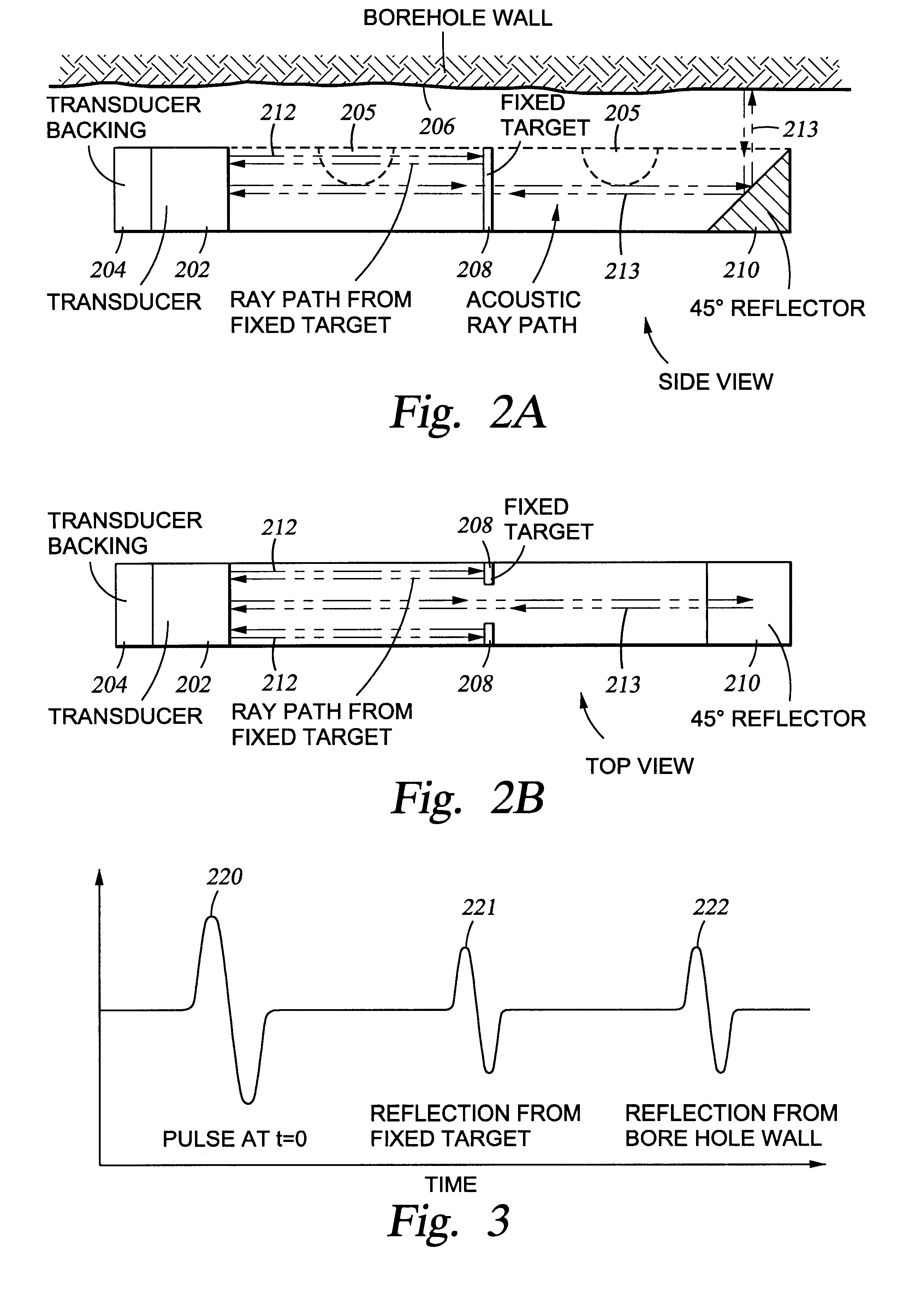Method and apparatus for measuring acoustic mud velocity and acoustic caliper
a technology of acoustic mud velocity and acoustic caliper, which is applied in the direction of seismology for waterlogging, instruments, and reradiation, etc., can solve the problems of adversely affecting data integrity, borehole rugosity adversely affecting downhole data measurement,
- Summary
- Abstract
- Description
- Claims
- Application Information
AI Technical Summary
Benefits of technology
Problems solved by technology
Method used
Image
Examples
Embodiment Construction
The present invention provides a means for measuring acoustic mud velocity and acoustic caliper. The present invention provides a device that enables simultaneous measurement of the acoustic mud velocity, and acoustic standoff or acoustic caliper. A precise mud velocity is measured with every firing of the transducer, thus a very precise standoff and / or caliper measurement is continuously provided by the present invention. The standoff and borehole caliper measurements and correction of other signals affected by the standoff and borehole caliper. The standoff and mud velocity measurements are used to correct other sensor data (e.g. gamma-gamma density, neutron, NMR) or for borehole geometry data. The borehole geometry data may be used for drilling efficiency (sloughing vs. spalling shale vs. washed out sands) or as input into geomechanical studies.
The method and apparatus of the present invention may be used with any one of several devices. The present invention is useful whenever a...
PUM
 Login to View More
Login to View More Abstract
Description
Claims
Application Information
 Login to View More
Login to View More - R&D
- Intellectual Property
- Life Sciences
- Materials
- Tech Scout
- Unparalleled Data Quality
- Higher Quality Content
- 60% Fewer Hallucinations
Browse by: Latest US Patents, China's latest patents, Technical Efficacy Thesaurus, Application Domain, Technology Topic, Popular Technical Reports.
© 2025 PatSnap. All rights reserved.Legal|Privacy policy|Modern Slavery Act Transparency Statement|Sitemap|About US| Contact US: help@patsnap.com



